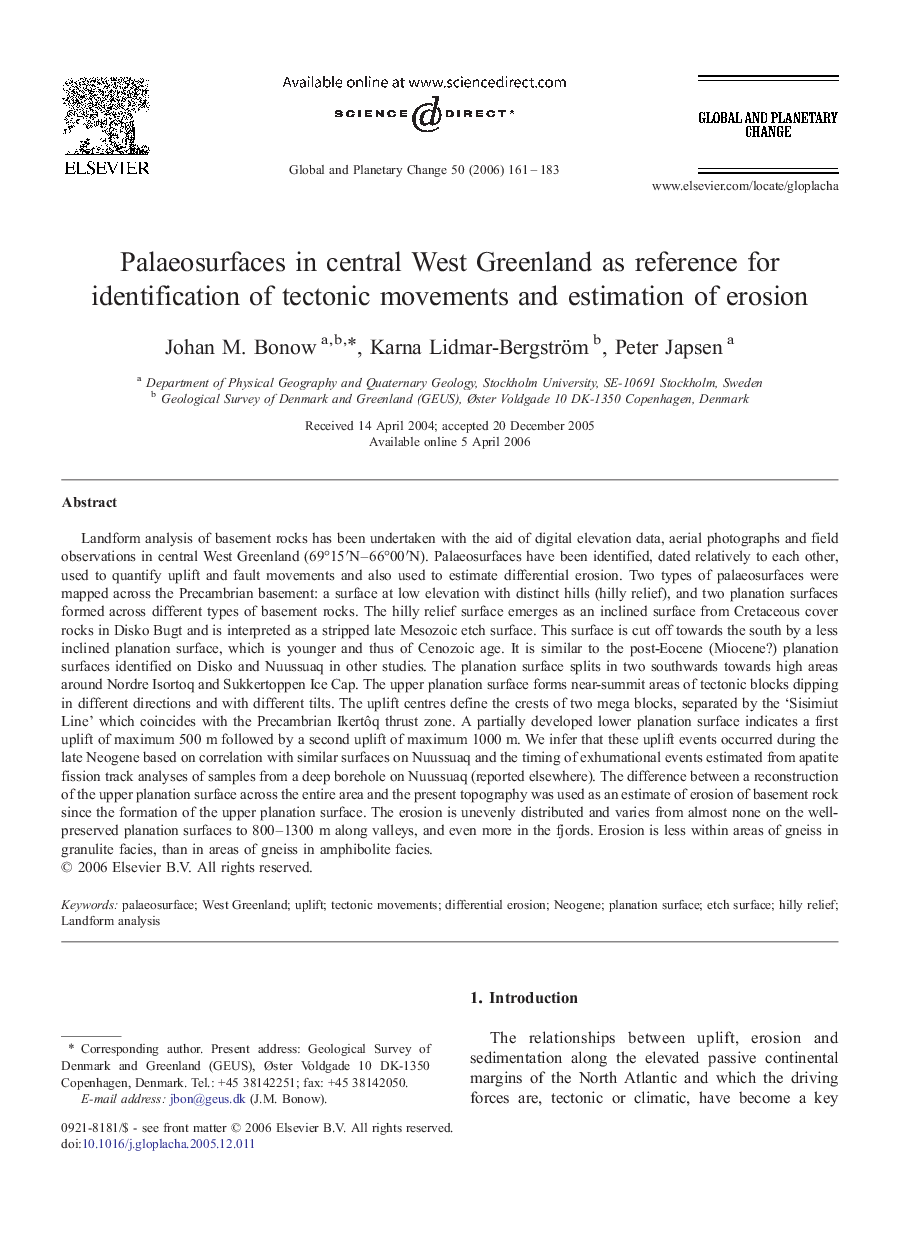| کد مقاله | کد نشریه | سال انتشار | مقاله انگلیسی | نسخه تمام متن |
|---|---|---|---|---|
| 4464534 | 1621739 | 2006 | 23 صفحه PDF | دانلود رایگان |

Landform analysis of basement rocks has been undertaken with the aid of digital elevation data, aerial photographs and field observations in central West Greenland (69°15′N–66°00′N). Palaeosurfaces have been identified, dated relatively to each other, used to quantify uplift and fault movements and also used to estimate differential erosion. Two types of palaeosurfaces were mapped across the Precambrian basement: a surface at low elevation with distinct hills (hilly relief), and two planation surfaces formed across different types of basement rocks. The hilly relief surface emerges as an inclined surface from Cretaceous cover rocks in Disko Bugt and is interpreted as a stripped late Mesozoic etch surface. This surface is cut off towards the south by a less inclined planation surface, which is younger and thus of Cenozoic age. It is similar to the post-Eocene (Miocene?) planation surfaces identified on Disko and Nuussuaq in other studies. The planation surface splits in two southwards towards high areas around Nordre Isortoq and Sukkertoppen Ice Cap. The upper planation surface forms near-summit areas of tectonic blocks dipping in different directions and with different tilts. The uplift centres define the crests of two mega blocks, separated by the ‘Sisimiut Line’ which coincides with the Precambrian Ikertôq thrust zone. A partially developed lower planation surface indicates a first uplift of maximum 500 m followed by a second uplift of maximum 1000 m. We infer that these uplift events occurred during the late Neogene based on correlation with similar surfaces on Nuussuaq and the timing of exhumational events estimated from apatite fission track analyses of samples from a deep borehole on Nuussuaq (reported elsewhere). The difference between a reconstruction of the upper planation surface across the entire area and the present topography was used as an estimate of erosion of basement rock since the formation of the upper planation surface. The erosion is unevenly distributed and varies from almost none on the well-preserved planation surfaces to 800–1300 m along valleys, and even more in the fjords. Erosion is less within areas of gneiss in granulite facies, than in areas of gneiss in amphibolite facies.
Journal: Global and Planetary Change - Volume 50, Issues 3–4, April 2006, Pages 161–183